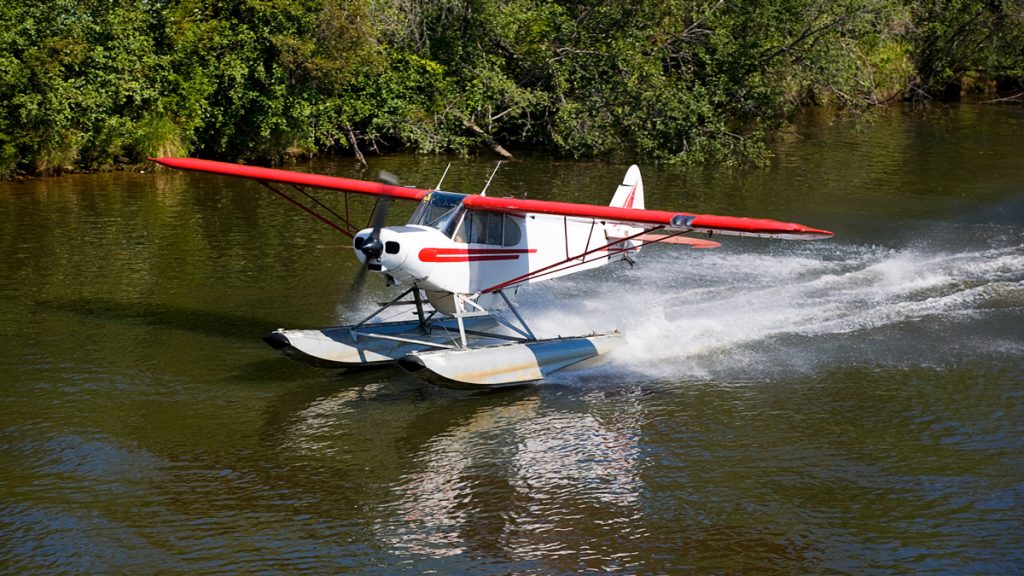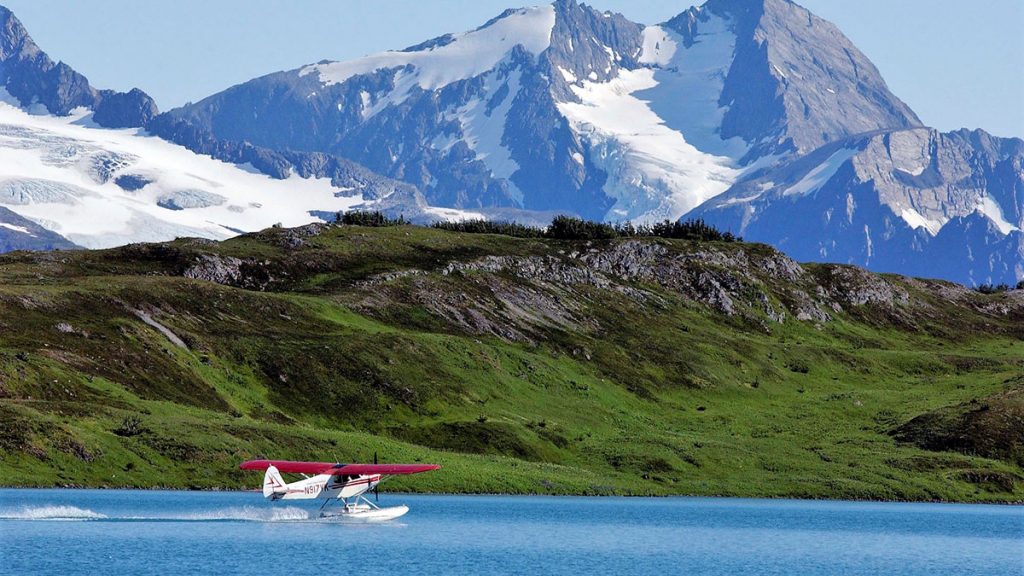If you’re looking for a unique and adventurous way to explore Alaska, flying in a floatplane is a must-try experience. In this article we will provide a comprehensive guide to everything you need to know about flying floatplanes in Alaska, including what they are, why they’re so unique, and what you can expect from the experience.
Alaska is home to some of the most rugged and remote terrain in the world, and one of the best ways to explore it is by flying in a floatplane. Floatplanes are unique aircraft that have the ability to land on water, making them the perfect mode of transportation in a state with more than 6,600 miles of coastline and over 3 million lakes, rivers, and streams.
What is a Floatplane?
A floatplane is an aircraft that is equipped with pontoons, or floats, instead of wheels, which allows it to take off and land on water, making them a versatile aircraft for exploring remote areas. Some floatplanes, known as amphibious airplanes, have retractable landing gear inside their pontoons allowing them to take off and land on water or land.

Floatplanes have a long history dating back to the early 1900s when they were used primarily for military use, such as for reconnaissance and rescue missions. Today, floatplanes are used for a variety of purposes, including sightseeing tours, fishing trips, and transportation to remote locations.
One of the primary advantages of floatplanes is their ability to land in areas where traditional airplanes cannot, such as lakes, rivers, and other bodies of water. This makes them ideal for exploring remote areas that are inaccessible by land.
Floatplanes come in a variety of sizes and styles, from small single-engine aircraft to large multi-engine planes that can carry dozens of passengers. They are typically powered by piston or turbine engines and can fly at a range of speeds, depending on their size and design. They have a long and storied history in aviation, and they continue to be an important mode of transportation in many parts of the world, especially in Alaska.
What Can You Expect from the Experience of Flying in a Floatplane in Alaska?
Flying in a floatplane in Alaska is an exhilarating experience that provides a unique perspective of the state’s vast and stunning wilderness. From the air, you can see glaciers, snow-capped mountains, and miles of untouched wilderness. Additionally, floatplanes provide access to remote areas that are otherwise difficult or impossible to reach, including national parks, wildlife refuges, and remote lakes and rivers.

The experience can literally be whatever you want it to be. In a floatplane, you are in control and you get to decide the details of your interactions with nature. Always dreamed of seeing the Kenai Fjords? A seaplane can take you there. Are you fascinated by watching wildlife? A floatplane can get you to bear spotting locations in a matter of minutes. Is back country camping on your own private lake on your bucket list? Take off from a seaplane base and find yourself with dozens of back country cabins to choose from within a range of 30 minutes flight time or less.
Watch the video below for a 1 minute preview of a floatplane flight in Alaska.
In a matter of minutes, a the above floatplane took off from Upper Trail Lake, Alaska and flew to multiple lakes completing “touch and goes” then returning to Upper Trail Lake, the seaplane base of Alaska Float Ratings and Scenic Mountain Air.
Who Can Fly a Floatplane in Alaska?
To fly a floatplane in Alaska as the pilot-in-command, you need a private pilot certificate with a seaplane rating. You can obtain a private pilot certificate through the Federal Aviation Administration (FAA) by completing the required number of flight hours, completing the specified knowledge exams and successfully passing a “checkride” with an FAA examiner.
After receiving your pilot’s certificate, in order to operate a floatplane a pilot must have specialized training and certification in the areas of water operations and must successfully complete a checkride with an FAA examiner to obtain a Single-Engine Sea (SES) or Multi-Engine Sea (MES) rating. Obtaining a seaplane rating is a challenging but very rewarding learning experience for a pilot of any experience level. It generally requires a minimum of 6-8 hours of flight training and 2 hours of ground school (classroom training) in order to prepare for your floatplane rating checkride.
In Alaska, there are many float rating flight schools available, including Alaska Float Ratings, which provide courses that range from basic float plane ratings, which require 2-3 days, to advanced back country mountain flying courses, taking 6-8 days or more.
What Are the Requirements for Renting a Floatplane in Alaska?
If you don’t own a floatplane, you can rent one from a flight school, rental company, or scenic charter company. Of course, the requirements for renting an airplane are going to be different depending on whether you are a pilot who wants to fly the floatplane or if you just want to be passenger experiencing a sightseeing tour.
Renting a floatplane if you're a pilot
If you are a pilot that wants to rent a floatplane to fly on your own, you’ll need to meet certain requirements, such as holding a minimum of a private pilot certificate with a seaplane rating and having a minimum number of hours of flight time, as required by the flight school or rental company.
In reviewing the average rates of aircraft rentals in Alaska we found that floatplane rental prices range from $200/hour, if the flight school allows solo rentals, up to $350-400 if the airplane rental company requires a certified flight instructor to fly with you. Though most pilots prefer to rent an aircraft an fly by themselves, there is a great advantage to flying with a CFI who is familiar with the Alaskan backcountry, aircraft performance on floats and can provide the pilot with refresher training that can improve their skills.
Renting a floatplane and hiring a pilot to fly it for you
For those that just want a quick float plane ride, this is a much more economical option for renting a floatplane in Alaska. Many scenic charter companies offer floatplane tours that range from 15 minutes and cost $99 per person, to 90 minute flights costing around $350 per person. A float plane tour is the easiest way to quickly experience the exhilaration of flying in a float plane. You can experience Alaska’s beauty by taking a short flight that offers views of a few gorgeous lakes and mountain ranges or you can truly immerse yourself in the magnificent views on a 60-90 minute tour where you will see endless lakes, streams and mountain beauty as well as ice fields with over 700 square miles of glaciers and potential wildlife sightings that add to the breath-taking beauty from every window seat.
Where Can You Fly a Floatplane in Alaska?
Alaska offers plenty of scenic spots for floatplane flying, including national parks, wildlife refuges, and remote lakes and rivers. Some of the popular destinations for floatplane flying in Alaska include Denali National Park, Glacier Bay National Park, Lake Hood, and Ketchikan.
Alaska contains more than 40% of the nation’s surface water resources including over 12,000 rivers, 3 millions lakes greater than 5 acres, with about 3,000 of them being officially named natural lakes, and numerous creeks and ponds. This provides almost unlimited options for flying a float plane in Alaska and give a floatplane pilot far more options for landings than a pilot flying a wheeled aircraft.
Floatplanes are an essential mode of transportation in Alaska, where many communities are accessible only by water or air. With over 80% of Alaska’s communities not connected by roads, floatplanes provide a vital link between remote areas and the rest of the state.
What Are the Safety Considerations for Flying a Floatplane in Alaska?
Alaska is a very complex aviation environment. Flying safely here requires thorough planning and special attention. When well planned, flying in Alaska presents no particular problems and can be very inspiring. Floatplane flying in Alaska requires extra caution and preparation due to the challenging weather conditions and terrain. It’s essential to check the weather forecast, plan your flight route, and carry necessary safety equipment, such as survival gear, communication devices, and emergency flares.
The FAA provides many great resources for pilots who are planning to fly in Alaska, including weather cameras, emergency gear requirements and recommendations and a large list of articles and guides to flying in Alaska.
Much of Alaska is mountainous. The correct entrance to mountain passes can be deceptive. Dead-end box canyons are common. Icing conditions are encountered year round. Airspace around major population centers can be quite crowded and contain special restrictions and requirements.
With all of this in mind, flying in Alaska can be tricky. But with proper precautions and planning the experienced pilot will be safe and prepared.
How to Get Started with Floatplane Flying in Alaska?
If you’re interested in flying a floatplane in Alaska, the first step, if you want to pilot the floatplane on your own, is to obtain a private pilot certificate with a seaplane rating. You can then rent a floatplane from a floatplane flight school. Remember to ask them if they have restrictions on renting their aircraft with or without a flight instructor.
If you’re simply looking to fly in a floatplane as a passenger, a quick google search will provide you with dozens of opens for scenic charter flight companies that will help you explore Alaska’s scenic beauty from the air.
In conclusion, flying a floatplane in Alaska is a unique and thrilling experience that offers a different perspective of Alaska’s vast and stunning wilderness. With proper training and safety precautions, you can enjoy this exciting adventure and create unforgettable memories.

Leave a Reply
You must be logged in to post a comment.